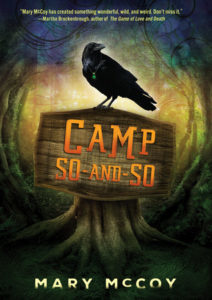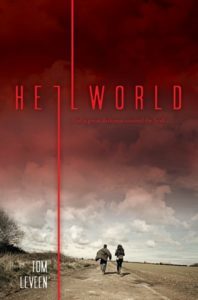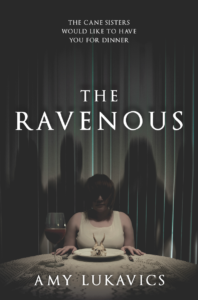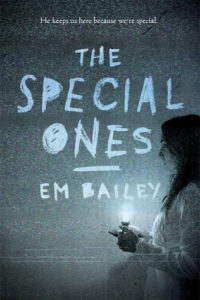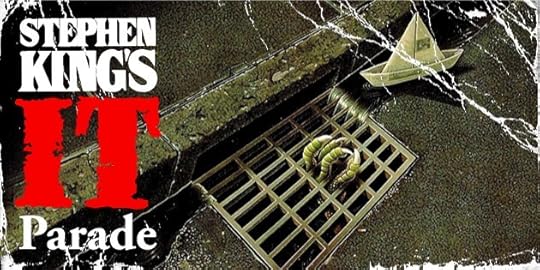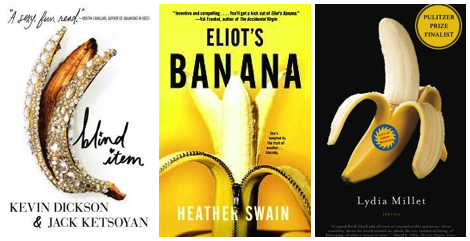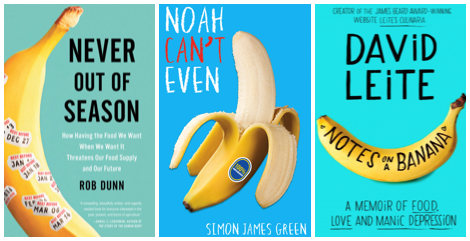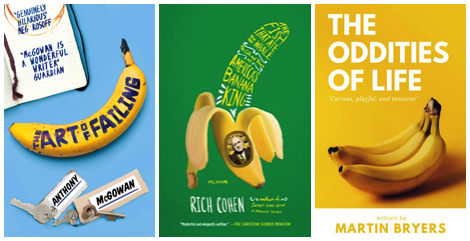Kelly Jensen's Blog, page 58
July 27, 2017
This Week at Book Riot
Over on Book Riot this week…
After reading Gabourey Sidibe’s memoir This Is Just My Face: Try Not To Stare and discovering what a book nerd she is, I rounded up some of her reading across social media.
YA authors who moonlight as *other* YA authors. For real.
Elsewhere…
Last couple of days to drop a review of Here We Are on Amazon for the chance to win $30 to the bookstore of your choice.
I wrote a post as part of the “Girls of Summer” list that Here We Are is part of, and it’s a post I really love and is really personal to me. It’s all about finding those books you connect with and holding them tight.
July 25, 2017
Graphic Novel Roundup
 Soupy Leaves Home by Cecil Castellucci and Jose Pimienta
Soupy Leaves Home by Cecil Castellucci and Jose Pimienta
I normally love Castellucci’s work, but this one fell flat for me. It’s about a girl named Pearl living during the Great Depression whose father beats her, so she disguises herself as a boy and runs away. She falls in with a hobo named Ramshackle who shows her the ropes of living on the road, in the various encampments, and how to get by with the help of generous strangers (and avoid the ones who aren’t so generous). Ramshackle has his own secrets, too, and soon Soupy (as Pearl calls herself) must learn to rely on herself in case Ramshackle is always around. I had a major problem with the “wise hobo” trope Castellucci uses here. Ramshackle and many other hobos speak platitudes like “I just couldn’t stop wandering, that’s why I live on the road” and “You don’t need food, you just need happy thoughts” and “Our imaginations will keep us warm.” (Those are a bit simplified, but pretty close.) The real reasons are much deeper – the economic crisis, mental health issues, poverty, unemployment, abuse, no social safety net, and so on – and aren’t even really hinted at. The hobo life – while interesting and worth exploring – is romanticized. Romanticizing poverty and homelessness is pretty distasteful.
The story was also hard to follow at times and the ending was completely implausible. I was also not a fan of the art or the color palette (mostly sickly green). There are some interesting bits about how hobos enforced their own rule of law and the symbols carved into fences they would use to communicate information about houses that would give food and work. Overall, though, it’s a dud. | Borrowed from the library.
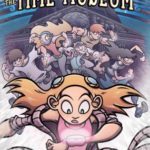 The Time Museum by Matthew Loux
The Time Museum by Matthew Loux
I’ve been meaning to write about this one for months – it’s a super fun middle grade story about time travel, so you know 12 year old me would have been all over it. Adult me is pretty into it too. Delia is competing to be an intern at her uncle’s time museum, and she must complete a series of tasks across many different times to prove her worth. Things get out of control, though, and she must team with up with the other competitors (who all come from different times) to defend the time museum. Loux’s story is creative and gets the most out of the time travel device. His art is expressive, kid-friendly but not cartoonish, and full color. I hope there will be sequels. | Finished copy from the publisher.
 Snotgirl Vol. 1: Green Hair Don’t Care by Bryan Lee O’Malley and Leslie Hung
Snotgirl Vol. 1: Green Hair Don’t Care by Bryan Lee O’Malley and Leslie Hung
Bryan Lee O’Malley is just not for me. I disliked the Scott Pilgrim books almost as much as I disliked the film version. Snotgirl confirms that it wasn’t just Scott Pilgrim – O’Malley’s characters are terrible everywhere. Snotgirl is about a 20-something fashion blogger who is incredibly insecure, despite her appearance otherwise online. She’s also just awful. And so are all of her friends. And everyone else she meets. She has terrible allergies which makes her nose run uncontrollably, hence the title. It seems like the series may eventually have some supernatural elements, but they’re only hinted at in this first volume. I won’t be reading the second. | Borrowed from the library.
 Shattered Warrior by Sharon Shinn and Molly Knox Ostertag
Shattered Warrior by Sharon Shinn and Molly Knox Ostertag
I’ve loved Sharon Shinn’s work since I first read her Samaria series when I was a teenager. (The Shape-Changer’s Wife, which I read in grad school, is also excellent). She teamed up with Molly Knox Ostertag for her first graphic novel, Shattered Warrior, based on one of her early unpublished novels. It’s everything I love in a graphic novel: a resourceful female protagonist, alien invasion, organized rebellion, a little bit of romance, plus lovely full-color art. It stands alone but also leaves the door open for sequels. I believe this was published for the adult market, but it’s suitable for teens as long as they don’t mind one panel with an exposed breast. Sharon Shinn has not disappointed. | Finished copy from the publisher.
July 23, 2017
Debut YA Novels of July 2017
It’s time for another round-up of debut YA novels of the month — here’s what we’ve got for July.
This round-up includes debut novels, where “debut” is in its purest definition. These are first-time books by first-time authors. I’m not including books by authors who are using or have used a pseudonym in the past or those who have written in other categories (adult, middle grade, etc.) in the past. Authors who have self-published are not included here either.
All descriptions are from Goodreads, unless otherwise noted; I’ve found Goodreads descriptions to offer better insight to what a book is about over WorldCat. If I’m missing any debuts out in July from traditional publishers — and I should clarify that indie/small presses are okay — let me know in the comments.
As always, not all noted titles included here are necessarily endorsements for those titles. List is arranged alphabetically by title, with pub dates beside them.
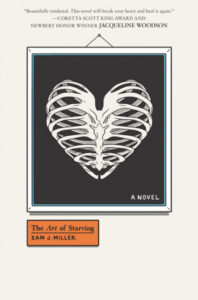 The Art of Starving by Sam J. Miller (7/11)
The Art of Starving by Sam J. Miller (7/11)
Matt hasn’t eaten in days.
His stomach stabs and twists inside, pleading for a meal. But Matt won’t give in. The hunger clears his mind, keeps him sharp—and he needs to be as sharp as possible if he’s going to find out just how Tariq and his band of high school bullies drove his sister, Maya, away.
Matt’s hardworking mom keeps the kitchen crammed with food, but Matt can resist the siren call of casseroles and cookies because he has discovered something: the less he eats the more he seems to have . . . powers. The ability to see things he shouldn’t be able to see. The knack of tuning in to thoughts right out of people’s heads. Maybe even the authority to bend time and space.
So what is lunch, really, compared to the secrets of the universe?
Matt decides to infiltrate Tariq’s life, then use his powers to uncover what happened to Maya. All he needs to do is keep the hunger and longing at bay. No problem. But Matt doesn’t realize there are many kinds of hunger… and he isn’t in control of all of them.
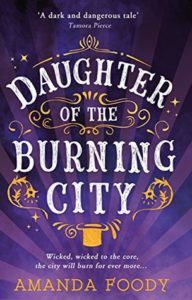 Daughter of the Burning City by Amanda Foody (7/25)
Daughter of the Burning City by Amanda Foody (7/25)
Reality is in the eye of the beholder…
Even among the many unusual members of the travelling circus that has always been her home sixteen year old Sorina stands apart as the only illusion-worker born in hundreds of years.
This rare talent allows her to create illusions that others can see, feel and touch, with personalities all of their own. Her creations are her family, and together they make up the cast of the Festival’s Freak Show.
But no matter how lifelike they may seem, her illusions are still just that—illusions, and not truly real.
Or so she always believed…until one of them is murdered.
Now she must unravel the horrifying truth before all her loved ones disappear.
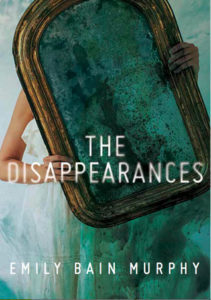 The Disappearances by Emily Bain Murphy (7/4)
The Disappearances by Emily Bain Murphy (7/4)
What if the ordinary things in life suddenly…disappeared?
Aila Quinn’s mother, Juliet, has always been a mystery: vibrant yet guarded, she keeps her secrets beyond Aila’s reach. When Juliet dies, Aila and her younger brother Miles are sent to live in Sterling, a rural town far from home–and the place where Juliet grew up.
Sterling is a place with mysteries of its own. A place where the experiences that weave life together–scents of flowers and food, reflections from mirrors and lakes, even the ability to dream–vanish every seven years.
No one knows what caused these “Disappearances,” or what will slip away next. But Sterling always suspected that Juliet Quinn was somehow responsible–and Aila must bear the brunt of their blame while she follows the chain of literary clues her mother left behind.
As the next Disappearance nears, Aila begins to unravel the dual mystery of why the Disappearances happen and who her mother truly was. One thing is clear: Sterling isn’t going to hold on to anyone’s secrets for long before it starts giving them up.
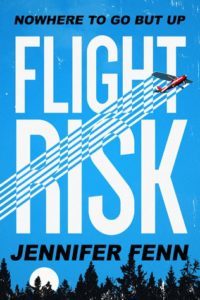 Flight Risk by Jennifer Fenn (7/18)
Flight Risk by Jennifer Fenn (7/18)
Who is Robert Jackson Kelly? Is he a juvenile delinquent? A criminal mastermind? A folk hero? One thing is clear: Robert always defies what people think of him. And now, the kid who failed at school, relationships, and almost everything in life, is determined to successfully steal and land a plane.
Told as an investigation into Robert’s psyche, the narrative includes multiple points of view as well as documentary elements like emails, official records, and interviews with people who knew Robert. Ultimately, Flight Risk is a thrilling story about one teenager who is determined to find a moment of transcendence after everyone else has written him off as lost.
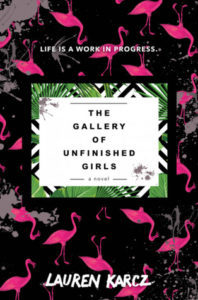 The Gallery of Unfinished Girls by Lauren Karcz (7/25)
The Gallery of Unfinished Girls by Lauren Karcz (7/25)
Mercedes Moreno is an artist. At least, she thinks she could be, even though she hasn’t been able to paint anything worthwhile since her award-winning piece Food Poisoning #1 last year.
Her lack of inspiration might be because her abuela is lying comatose in faraway Puerto Rico after suffering a stroke. Or the fact that Mercedes is in love with her best friend, Victoria, but is too afraid to admit her true feelings.
Despite Mercedes’s creative block, art starts to show up in unexpected ways. A piano appears on her front lawn one morning, and a mysterious new neighbor invites Mercedes to paint with her at the Red Mangrove Estate.
At the Estate, Mercedes can create in ways she never has before. She can share her deepest secrets and feel safe. But Mercedes can’t take anything out of the Estate, including her new-found clarity. As her life continues to crumble around her, the Estate offers more solace than she could hope for. But Mercedes can’t live both lives forever, and ultimately she must choose between this perfect world of art and truth and a much messier reality.
 In 27 Days by Alison Gervais (7/25)
In 27 Days by Alison Gervais (7/25)
Hadley Jamison is shocked when she hears that her classmate, Archer Morales, has committed suicide. She didn’t know the quiet, reserved guy very well, but that doesn’t stop her from feeling there was something she could have done to help him.
Hoping to find some sense of closure, Hadley attends Archer’s funeral. There, Hadley is approached by a man who calls himself Death and offers her a deal. If Hadley accepts, she will be sent back 27 days in time to prevent Archer from killing himself. But when Hadley agrees to Death’s terms and goes back to right the past, she quickly learns her mission is harder than she ever could have known.
Hadley soon discovers Archer’s reasons for being alone, and Archer realizes that having someone to confide in isn’t as bad as he’d always thought. But when a series of dangerous accidents starts pushing them apart, Hadley must decide whether she is ready to risk everything – including her life – to keep Archer safe.
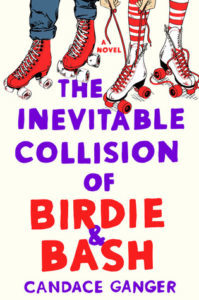 The Inevitable Collision of Birdie and Bash by Candace Ganger (7/25)
The Inevitable Collision of Birdie and Bash by Candace Ganger (7/25)
Birdie never meant to be at the party. Bash should have been long gone. But when they meet, a collision course is set off they may never recover from.
Sebastian Alvaréz is just trying to hold the pieces together: to not flunk out, to keep his sort-of-best friend Wild Kyle from doing something really bad, and to see his beloved Ma through chemo. But when he meets Birdie Paxton, a near-Valedictorian who doesn’t realize she’s smoking hot in her science pun T-shirt, at a party, an undeniable attraction sparks. And suddenly he’s not worried about anything. But before they are able to exchange numbers, they are pulled apart. A horrifying tragedy soon links Birdie and Bash together—but neither knows it. When they finally reconnect, and are starting to fall—hard—the events of the tragedy unfold, changing both their lives in ways they can never undo.
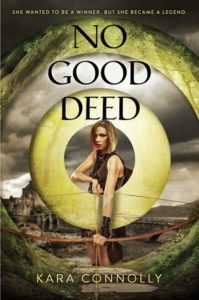 No Good Deed by Kara Connolly (7/18)
No Good Deed by Kara Connolly (7/18)
Ellie Hudson is the front-runner on the road to gold for the U.S. Olympic archery team. All she has to do is qualify at the trials in jolly old England. When Ellie makes some kind of crazy wrong turn in the caverns under Nottingham Castle—yes, that Nottingham—she ends up in medieval England.
Ellie doesn’t care how she got to the Middle Ages; she just wants to go home before she gets the plague. But people are suffering in Nottingham, and Ellie has the skills to make it better. What’s an ace archer to do while she’s stuck in Sherwood Forest but make like Robin Hood?
Pulled into a past life as an outlaw, Ellie feels her present fading away next to daring do-gooding and a devilishly handsome knight. Only, Ellie is on the brink of rewriting history, and when she picks up her bow and arrow, her next shot could save her past—or doom civilization’s future.
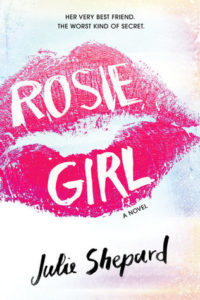 Rosie Girl by Julie Shepard (7/11)
Rosie Girl by Julie Shepard (7/11)
After her father passes away, seventeen-year-old Rosie is forced to live with her abusive stepmom Lucy and her deadbeat boyfriend, Judd, who gives Rosie the sort of looks you shouldn’t give your girlfriend’s step-daughter. Desperate for a way out, Rosie would do just about anything to escape the life she’s been handed. Then she finds a letter her dad wrote years ago, a letter confessing that Rosie’s birth mother isn’t dead, as she believed, but alive somewhere—having left them when Rosie was a little girl for reasons he won’t reveal.
Rosie resolves to find her birth mom, and she’ll put everything on the line to make that happen. She hires a PI paid for by her best friend, Mary, who turns tricks for money. Unlike Rosie, Mary’s no delicate flower and when she sees the opportunity to make some cash and help out her closest friend, she takes it. Romance blooms when the PI Rosie hires hands the case off to his handsome nephew Mac, but Rosie struggles to keep her illicit activities with Mary a secret. Things begin to unravel when Rosie starts getting creepy anonymous texts from johns looking for Mary. And then there’s Mary, the one person Rosie can count on, who’s been acting strangely all of a sudden. As Rosie and Mary get closer to finally uncovering the truth about Rosie’s mom, Rosie comes face to face with a secret she never saw coming.
 Wesley James Ruined My Life by Jennifer Honeybourn (7/18)
Wesley James Ruined My Life by Jennifer Honeybourn (7/18)
Sixteen-year-old Quinn Hardwick’s having a rough summer. Her beloved grandmother has been put into a home, her dad’s gambling addiction has flared back up and now her worst enemy is back in town: Wesley James, former childhood friend—until he ruined her life, that is.
So when Wesley is hired to work with her at Tudor Tymes, a medieval England themed restaurant, the last thing Quinn’s going to do is forgive and forget. She’s determined to remove him from her life and even the score all at once—by getting him fired.
But getting rid of Wesley isn’t as easy as she’d hoped. When Quinn finds herself falling for him, she has to decide what she wants more: to get even, or to just get over it.
 Words on Bathroom Walls by Julia Walton (7/4)
Words on Bathroom Walls by Julia Walton (7/4)
Adam has just been diagnosed with schizophrenia. He sees and hears people who aren’t there: Rebecca, a beautiful girl who understands him; the Mob Boss, who harasses him; and Jason, the naked guy who’s unfailingly polite. It should be easy to separate the real from the not real, but Adam can’t.
Still, there’s hope. As Adam starts fresh at a new school, he begins a drug trial that helps him ignore his visions. Suddenly everything seems possible, even love. When he meets Maya, a fiercely intelligent girl, he desperately wants to be the great guy that she thinks he is. But then the miracle drug begins to fail, and Adam will do anything to keep Maya from discovering his secret.
July 20, 2017
This Week at Book Riot
Over on Book Riot this week…
A look at the top-selling 2016 YA titles from Amazon in each state. I’m curious: any other data like this you’d be interested in?
60 awesome bookish necklaces.
A round-up of social justice themed YA fiction. Obviously, hardly scratching the surface here, but a starting place nonetheless.
July 18, 2017
Monthly Giving: EMILY’s List/Annie’s List
This month is a little different for me: it’s the first time I’m giving to an organization that isn’t officially a nonprofit. EMILY’s List is a political action committee (PAC) whose goal is to help elect progressive (particularly pro-choice) Democratic women to political office. Emily isn’t a woman, it’s an acronym: Early Money Is Like Yeast (as in, it helps raise the dough). If you’ve watched The West Wing, there is a small shout-out of sorts to them in one of the episodes.
Annie’s List (which actually is named after a woman) is a Texas PAC with similar goals, but focused on the state. I’m including both of them in this post because I actually gave to Annie’s List this time around. All of my other contributions so far have been on the country-wide level and I feel it’s also necessary to give more locally, particularly in a state gerrymandered to be as red as Texas.
If progressive values are important to you (and if you’re a fan of us here at Stacked, they probably are), I encourage you to give to organizations like these. If there isn’t one in your state, EMILY’s list does help progressive, pro-choice women all over the country get elected, not just to national but also state and local office. In a time where our country is swinging dangerously right and there are whispers that Democrats need to allow anti-choice people “into the fold” in order to win votes, I appreciate more and more groups that state unequivocally that being progressive means being pro-choice. Period.
This week’s booklist features titles about women who have been elected to public office or have tried to do so. For a bit of a wider net (including activists, suffragettes, appointed officials, and other important women, both real and fictional), check out this post from A Mighty Girl. Descriptions are from Goodreads.
Picture Books
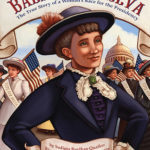 Ballots for Belva by Sudipta Bardhan-Quallen, illustrated by Courtney A. Martin
Ballots for Belva by Sudipta Bardhan-Quallen, illustrated by Courtney A. Martin
In 1884, when men were the only people allowed to vote in national elections, Belva Lockwood took a bold but legal step: She ran for president! Women did not have the same rights as men, but Belva went on undeterred – and she got votes! Her run for office was based on experience and merit: Unlike many women of the time, she went to college, then to law school, and even argued cases before the Supreme Court.
Though her campaign was difficult, Belva never wavered in her commitment to equality, earning the respect of many fellow citizens. A little-known but richly deserving American historical figure, Belva is an inspiration for modern-day readers. Despite all the changes in society since Belva’s time, there is still a lot to fight for, and Belva shows the way. The book also includes a glossary and a timeline of women’s suffrage events.
 Grace for President by Kelly DiPucchio, illustrated by LeUyen Pham
Grace for President by Kelly DiPucchio, illustrated by LeUyen Pham
“Where are the girls?”
When Grace’s teacher reveals that the United States has never had a female president, Grace decides to be the first. And she immediately starts off her political career as a candidate the school’s mock election. But soon, she realizes that she has entered a tough race. Her popular opponent claims to be the “best man for the job”–and seems to have captured all the male votes–while Grace concentrates on being the best person.
In this timely story, author Kelly DiPucchio not only gives readers a fun introduction to the American electoral system, but also teaches them the value of hard work, courage, and independent thought–and offers an inspiring example of how to choose our leaders.
 Isabella: Girl in Charge by Jennifer Fosberry and Mike Litwin
Isabella: Girl in Charge by Jennifer Fosberry and Mike LitwinA big event has Isabella ready to leave home at the crack of dawn. But that’s a motion her parents are not likely to pass. After a two-to-one vote, it’s decided that some things need to happen before Isabella can leave the house—like eating breakfast and brushing her teeth! If her house is going to work like a democracy, Isabella knows what she has to do; call an assembly and campaign her way out the door!
Taking inspiration from the women who trail blazed their way onto the political map of America, Isabella celebrates the women who were first to hold their offices. And if Isabella can get her parents out the door, she might just witness the first woman voted into the highest position of all…
 Hillary Rodham Clinton: Some Girls Are Born to Lead by Michelle Markel, illustrated by LeUyen Pham
Hillary Rodham Clinton: Some Girls Are Born to Lead by Michelle Markel, illustrated by LeUyen Pham
In the 1950s, it was a man’s world. Girls weren’t supposed to act smart, tough, or ambitious. Even though, deep inside, they may have felt that way. And then along came Hillary. Brave, brilliant, and unstoppable, she was out to change the world.
They said a woman couldn’t be a mother and a lawyer. Hillary was both. They said a woman shouldn’t be too strong or too smart. Hillary was fearlessly herself. It didn’t matter what people said—she was born to lead. With illustrations packed full of historical figures and details, this gorgeous and informative picture book biography is perfect for every budding leader.
 When Penny Met Potus by Rachel Ruiz, illustrated by Melissa Manwill
When Penny Met Potus by Rachel Ruiz, illustrated by Melissa Manwill
From debut author Rachel Ruiz, When Penny Met POTUS is a unique and clever picture book about a young girl whose mother works for the president of the United States. Penny has heard the term POTUS over and over but doesn’t know what it means–and her imagination runs wild! When she spends a day at the office with her mother, she asks a few questions, looks around, and tries to discover just who–or what– POTUS is.
 Hillary by Jonah Winter, illustrated by Raul Colon
Hillary by Jonah Winter, illustrated by Raul Colon
In this beautiful and empowering picture-book biography of presidential candidate Hillary Rodham Clinton, New York Times bestselling author Winter and award-winning illustrator Colón illuminate her distinguished life and career. This stunning project follows Clinton from her early years as an outspoken student at Wellesley College and Yale Law School to marrying Bill Clinton and raising daughter Chelsea, to becoming First Lady of the United States and then a U.S. Senator and Secretary of State. Here is the inspiring story of the woman who may soon change the world—into a place where a girl can dream of growing up to be president.
Tween and Young Adult
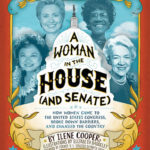 A Woman in the House (and Senate) by Ilene Cooper, illustrated by Elizabeth Baddeley
A Woman in the House (and Senate) by Ilene Cooper, illustrated by Elizabeth Baddeley
For the first 128 years of our country’s history, not a single woman served in the Senate or House of Representatives. All of that changed, however, in November 1916, when Jeannette Rankin of Montana became the first woman elected to Congress—even before the Nineteenth Amendment gave women across the U.S. the right to vote.
Beginning with the women’s suffrage movement and going all the way through the results of the 2012 election, Ilene Cooper deftly covers more than a century of U.S. history in order to highlight the influential and diverse group of female leaders who opened doors for women in politics as well as the nation as a whole. Featured women include Hattie Caraway (the first woman elected to the Senate), Patsy Mink (the first woman of color to serve in Congress), Shirley Chisholm (the first African-American woman in Congress), and present-day powerhouses like Nancy Pelosi and Hillary Clinton.
 Hillary Rodham Clinton: Do All the Good You Can by Cynthia Levinson
Hillary Rodham Clinton: Do All the Good You Can by Cynthia Levinson
An inspiring and meticulously researched middle grade biography of Hillary Rodham Clinton—First Lady, senator, secretary of state, and the first female presidential nominee in United States history.
Hillary Rodham Clinton is a true leader. Growing up in Park Ridge, Illinois, Hillary was inspired by the philosophy of John Wesley, who urged his followers to “do all the good you can.” Rising to prominence in 1992 as the First Lady of the United States, Hillary captured the world’s attention with her bold ideas and political forcefulness. From her time at Wellesley to her life at the White House and beyond, Hillary has been at the forefront of huge change—and despite setbacks and political scandals, she has worked for good in the world.
Acclaimed author Cynthia Levinson creates a compelling and personal portrait of Hillary’s historic journey from her childhood to her service as secretary of state and beyond.
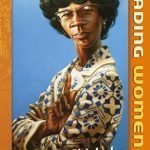 Shirley Chisholm by Lucia Raatma
Shirley Chisholm by Lucia Raatma
A biography of Shirley Chisholm, the first black woman elected to US Congress and the first woman to run for the Democratic party’s presidential nomination. [my own description]
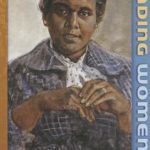 Barbara Jordan by Lucia Raatma
Barbara Jordan by Lucia Raatma
A biography of Barbara Jordan, the first black person elected to the Texas Senate post-reconstruction and later a US congresswoman. [my own description]
July 16, 2017
YA Horror Reads of 2017
If you’ve been around STACKED for any period of time, you know YA horror is one of my favorite genres. I’ve been reading it since I was young, and I always look forward to picking up new horror titles, as well as exploring the backlist. July might not feel close to October, which is when horror season really ramps up, but for those who love horror year-round — as well as those who love to serve readers who itch for those books in October — July is always an excellent month to begin thinking about it.
Here’s a look at the YA horror novels that have hit shelves in 2017, as well as the titles that will be releasing before the year ends. All descriptions are from Goodreads, as are publication dates.
Itching for more YA horror related reading? You can check out my post on 65 YA horror books written by women, a guide to the genre (written in 2013 but still relevant!), why YA horror is a staple at SLJ, and my big round-up of posts relating to horror from last fall.
Now let’s get spooky.
 The Beast Is An Animal by Peternelle van Arsdale
The Beast Is An Animal by Peternelle van Arsdale
Alys was seven when the soul eaters came to her village.
These soul eaters, twin sisters who were abandoned by their father and slowly morphed into something not quite human, devour human souls. Alys, and all the other children, were spared—and they were sent to live in a neighboring village. There the devout people created a strict world where good and evil are as fundamental as the nursery rhymes children sing. Fear of the soul eaters—and of the Beast they believe guides them—rule village life. But the Beast is not what they think it is. And neither is Alys.
Inside, Alys feels connected to the soul eaters, and maybe even to the Beast itself. As she grows from a child to a teenager, she longs for the freedom of the forest. And she has a gift she can tell no one, for fear they will call her a witch. When disaster strikes, Alys finds herself on a journey to heal herself and her world. A journey that will take her through the darkest parts of the forest, where danger threatens her from the outside—and from within her own heart and soul.
The letters went out in mid-February. Each letter invited its recipient to spend a week at Camp So-and-So, a lakeside retreat for girls nestled high in the Starveling Mountains. Each letter came with a glossy brochure with photographs of young women climbing rocks, performing Shakespearean theatre under the stars, and spiking volleyballs. Each letter was signed in ink by the famed and reclusive businessman and philanthropist, Inge F. Yancey IV.
By the end of the month, twenty-five applications had been completed, signed, and mailed to a post office box in an obscure Appalachian town.
Had any of these girls tried to follow the directions in the brochure and visit the camp for themselves on that day in February, they would have discovered that there was no such town and no such mountain and that no one within a fifty-mile radius had ever heard of Camp So-and-So.
 Devil in Ohio by Daria Polatin (November 7)
Devil in Ohio by Daria Polatin (November 7)
When fifteen-year-old Jules Mathis comes home from school to find a strange girl, her mother explains that Mae is one of her patients at the hospital and will be staying with their family for a few days. But shortly after, Mae is wearing Jules’ clothes, sleeping in her bedroom, edging her out of her position on the school paper, and kissing Jules’s crush. Then things get weird.
Jules walks in on a half-dressed Mae, she’s startled to see a pentagram carved into her back. Soon white roses start turning up on the front porch, a rabid dog bites one of Jules’ sisters, and Jules’ parents, who never fight, start arguing behind closed doors.
Jules pieces clues together and discovers that Mae may be a survivor of the strange cult that has taken over a nearby town. And they will stop at nothing to get Mae back.
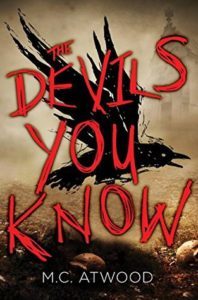 The Devils You Know by MC Atwood (October 3)
The Devils You Know by MC Atwood (October 3)
Plenty of legends surround the infamous Boulder House in Whispering Bluffs, Wisconsin, but nobody takes them seriously. Certainly nobody believes that the original owner, Maxwell Cartwright Jr., cursed its construction—or that a murder of crows died upon its completion, their carcasses turning the land black. If anyone did believe it all, there’s no way River Red High would offer a field trip there for the senior class.
Five very different seniors on the trip—Violet, Paul, Ashley, Dylan, and Gretchen—have reasons beyond school spirit for not ditching the trip. When they’re separated from the group, they discover that what lies within Boulder House is far more horrifying than any local folklore. To survive, they’ll have to band together in ways they never could have imagined and ultimately confront the truths of their darkest selves.
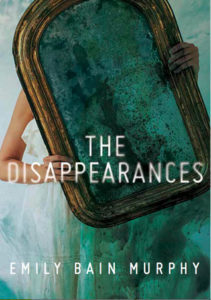 The Disappearances by Emily Bain Murphy
The Disappearances by Emily Bain Murphy
What if the ordinary things in life suddenly…disappeared?
Aila Quinn’s mother, Juliet, has always been a mystery: vibrant yet guarded, she keeps her secrets beyond Aila’s reach. When Juliet dies, Aila and her younger brother Miles are sent to live in Sterling, a rural town far from home–and the place where Juliet grew up.
Sterling is a place with mysteries of its own. A place where the experiences that weave life together–scents of flowers and food, reflections from mirrors and lakes, even the ability to dream–vanish every seven years.
No one knows what caused these “Disappearances,” or what will slip away next. But Sterling always suspected that Juliet Quinn was somehow responsible–and Aila must bear the brunt of their blame while she follows the chain of literary clues her mother left behind.
As the next Disappearance nears, Aila begins to unravel the dual mystery of why the Disappearances happen and who her mother truly was. One thing is clear: Sterling isn’t going to hold on to anyone’s secrets for long before it starts giving them up.
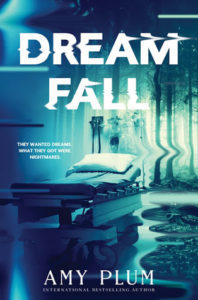 Dreamfall by Amy Plum (September 7)
Dreamfall by Amy Plum (September 7)
Cata Cordova suffers from such debilitating insomnia that she agreed to take part in an experimental new procedure. She thought things couldn’t get any worse…but she was terribly wrong.
Soon after the experiment begins, there’s a malfunction with the lab equipment, and Cata and six other teen patients are plunged into a shared dreamworld with no memory of how they got there. Even worse, they come to the chilling realization that they are trapped in a place where their worst nightmares have come to life. Hunted by creatures from their darkest imaginations and tormented by secrets they’d rather keep buried, Cata and the others will be forced to band together to face their biggest fears. And if they can’t find a way to defeat their dreams, they will never wake up.
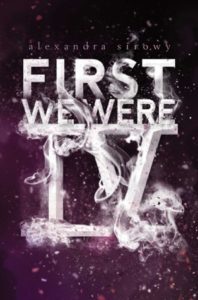 First We Were IV by Alexandra Sirowy (July 25)
First We Were IV by Alexandra Sirowy (July 25)
It started for pranks, fun, and forever memories.
A secret society – for the four of us.
The rules: Never lie. Never tell. Love each other.
We made the pledge and danced under the blood moon on the meteorite in the orchard. In the spot we found the dead girl five years earlier. And discovered the ancient drawings way before that.
Nothing could break the four of us apart – I thought.
But then, others wanted in. Our seaside town had secrets. History.
We wanted revenge.
We broke the rules. We lied. We told. We loved each other too much, not enough, and in ways we weren’t supposed to.
Our invention ratcheted out of control.
What started as a secret society, ended as justice. Revenge. Death. Rebellion.
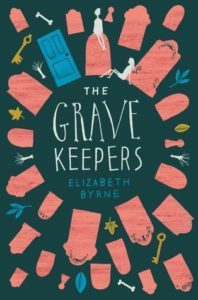 The Grave Keepers by Elizabeth Byrne (September 12)
The Grave Keepers by Elizabeth Byrne (September 12)
Lately, Athena Windham has been spending all her spare time in her grave.
Her parents—owners of a cemetery in Upstate New York—are proud of her devoutness, but her younger sister, Laurel, would rather spend her time exploring the forest that surrounds the Windham’s’ property than in her own grave.
The Windham girls lead secluded lives—their older sister died in a tragic accident and their parents’ protectiveness has made the family semi-infamous.
As the new school year begins, the outside world comes creeping in through encounters with mean girls, a new friend, and a runaway boy hiding out in the cemetery. Meanwhile, a ghost hangs around the Windham property—the only grave keeper never to cross over—plotting how to keep the sisters close to home and close to her . . . forever.
The Hanging Girl by Eileen Cook (October 3)
Skye Thorn has given tarot card readings for years, and now her psychic visions are helping the police find the town’s missing golden girl. It’s no challenge—her readings have always been faked, but this time she has some insider knowledge. The kidnapping was supposed to be easy—no one would get hurt and she’d get the money she needs to start a new life. But a seemingly harmless prank has turned dark, and Skye realizes the people she’s involved with are willing to kill to get what they want and she must discover their true identity before it’s too late.
Five years ago, Abby Booth’s mom, co-host of a ghost hunting reality show, went missing while filming in a ‘haunted’ cave in Arizona.
Since then, Abby’s life has all but fallen to pieces, most notably because of her dad’s deep depression and how they’ve drifted further and further apart.
But now, at seventeen, Abby has decided that things will change. She plans to go to the same cave where her mom and the crew went missing and to find out, once and for all, what happened there.
With the help of the co-host’s son Charlie and two of his friends, Abby sets off on a quest for answers…but what the group ends up finding, what they stumble across in that dark, primordial cave in Arizona, is nothing they could have ever imagined.
Abby was investigating a possible haunting… she never expected that there could be something worse.
 The Hollow Girl by Hillary Monahan (October 10)
The Hollow Girl by Hillary Monahan (October 10)
Five boys attacked her.
Now they must repay her with their blood and flesh.
Bethan is the apprentice to a green healer named Drina in a clan of Welsh Romanies. Her life is happy and ordered and modest, as required by Roma custom, except for one thing: Silas, the son of the chieftain, has been secretly harassing her.
One night, Silas and his friends brutally assault Bethan and a half-Roma friend, Martyn. As empty and hopeless as she feels from the attack, she asks Drina to bring Martyn back from death’s door. “There is always a price for this kind of magic,” Drina warns. The way to save him is gruesome. Bethan must collect grisly pieces to fuel the spell: an ear, some hair, an eye, a nose, and fingers.
She gives the boys who assaulted her a chance to come forward and apologize. And when they don’t, she knows exactly where to collect her ingredients to save Martyn.
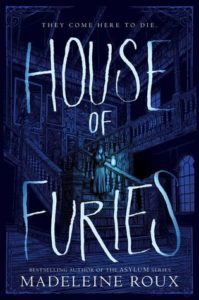 House of Furies by Madeleine Roux
House of Furies by Madeleine Roux
After escaping a harsh school where punishment was the lesson of the day, seventeen-year-old Louisa Ditton is thrilled to find employment as a maid at a boarding house. But soon after her arrival at Coldthistle House, Louisa begins to realize that the house’s mysterious owner, Mr. Morningside, is providing much more than lodging for his guests. Far from a place of rest, the house is a place of judgment, and Mr. Morningside and his unusual staff are meant to execute their own justice on those who are past being saved.
Louisa begins to fear for a young man named Lee who is not like the other guests. He is charismatic and kind, and Louisa knows that it may be up to her to save him from an untimely judgment. But in this house of distortions and lies, how can Louisa be sure whom to trust?
Featuring stunning interior illustrations from artist Iris Compiet, plus photo-collages that bring Coldthistle House to chilling life, House of Furies invites readers to a world where the line between monsters and men is ghostly thin.
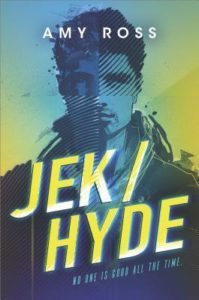 Jek/Hyde by Amy Ross (October 3)
Jek/Hyde by Amy Ross (October 3)
Lulu and Jek are science nerds, and have been best friends since they were young…or at least they used to be. Lately Jek has been pulling away from Lulu, just as she’s coming to terms with how she really feels about him. Just as she was ready to see if there could be something more between them.
But Lulu’s thoughts are derailed by a mysterious new guy who’s showing up at local parties. Hyde is the definition of a bad boy, and everybody knows it…but no one can seem to resist his charms. Girls can’t stay away from him, and guys all want to be him. And even though Lulu’s heart belongs to Jek, she can’t deny Hyde’s attraction either.
She also knows that there’s something not quite right about Hyde. That the rumors of his backwoods parties make them sound a little more dangerous than what any of her friends are accustomed to. And she doesn’t like the fact that Hyde seems to be cozying up to Jek, and that they seem to be intertwined in ways that have Lulu worrying for Jek’s safety.
If Hyde has a dark secret, Lulu is determined to find out what it is, and to help Jek…before it’s too late for both of them.
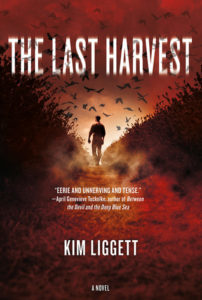 The Last Harvest by Kim Liggett
The Last Harvest by Kim Liggett
“I plead the blood.”
Those were the last words seventeen-year-old golden boy quarterback Clay Tate heard rattling from his dad’s throat when he discovered him dying on the barn floor of the Neely Cattle Ranch, clutching a crucifix to his chest.
Now, on the first anniversary of the Midland, Oklahoma slaughter, the whole town’s looking at Clay like he might be next to go over the edge. Clay wants to forget the past, but the sons and daughters of the Preservation Society—a group of prominent farmers his dad accused of devil worship—won’t leave him alone. Including Ali, his longtime crush, who suddenly wants to reignite their romance after a year of silence, and hated rival Tyler Neely, who’s behaving like they’re old friends.
Even as Clay tries to reassure himself, creepy glances turn to sinister stares and strange coincidences build to gruesome rituals—but when he can never prove that any of it happened, Clay worries he might be following his dad down the path to insanity…or that something far more terrifying lies in wait around the corner.
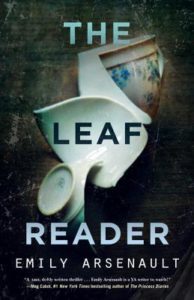 The Leaf Reader by Emily Arsenault
The Leaf Reader by Emily Arsenault
Maybe, occasionally, some of the pictures I saw in teacups were not for the tea drinkers. Maybe some of them were for me.
Marnie Wells knows that she creeps people out. It’s not really her fault; her brother is always in trouble, and her grandmother, who’s been their guardian since Mom took off is…eccentric. So no one even bats an eye when Marnie finds an old book about reading tea leaves and starts telling fortunes. The ceremony and symbols are weirdly soothing, but she knows—and hopes everyone else does too—that none of it’s real.
Then basketball star Matt Cotrell asks for a reading. He’s been getting emails from someone claiming to be his best friend, Andrea Quinley, who disappeared and is presumed dead. And while they’d always denied they were romantically involved, a cloud of suspicion now hangs over Matt. But Marnie sees a kindred spirit: someone who, like her, is damaged by association.
Suddenly the readings seem real. And, despite the fact that they’re telling Marnie things about Matt that make him seem increasingly dangerous, she can’t shake her initial attraction to him. In fact, it’s getting stronger. And that could turn out to be deadly.
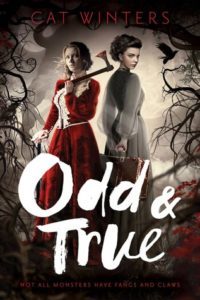 Odd and True by Cat Winters (September 12)
Odd and True by Cat Winters (September 12)
Trudchen grew up hearing Odette’s stories of their monster-slaying mother and a magician’s curse. But now that Tru’s older, she’s starting to wonder if her older sister’s tales were just comforting lies, especially because there’s nothing fantastic about her own life—permanently disabled and in constant pain from childhood polio.
In 1909, after a two-year absence, Od reappears with a suitcase supposedly full of weapons and a promise to rescue Tru from the monsters on their way to attack her. But it’s Od who seems haunted by something. And when the sisters’ search for their mother leads them to a face-off with the Leeds Devil, a nightmarish beast that’s wreaking havoc in the Mid-Atlantic states, Tru discovers the peculiar possibility that she and her sister—despite their dark pasts and ordinary appearances—might, indeed, have magic after all.
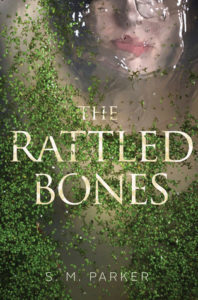 The Rattled Bones by SM Parker (August 22)
The Rattled Bones by SM Parker (August 22)
Unearthing years of buried secrets, Rilla Brae is haunted by ghostly visions tied to the tainted history of a mysterious island in this haunting novel from the author of The Girl Who Fell.
Maine-bred, independent Rilla Brae is no stranger to the deep. She knows the rhythms of hard work and harder seas. But when she experiences the sudden death of her father, the veil between the living and the dead blurs and she begins to be haunted by a girl on a nearby, uninhabited island. The girl floats a song over the waves, and it is as beautiful as it is terrifying. Familiar and distant.
Then Rilla meets Sam, a University of Southern Maine archeology student tasked with excavating the very island where the ghostly girl has appeared. Sam sifts the earth looking for the cultural remains of an island people who were forcibly evicted by the state nearly a hundred years ago. Sam tells Rilla the island has a history no locals talk about—if they know about it at all—due to the shame the events brought to the working waterfront community. All Rilla knows for sure is that the island has always been there—an eerie presence anchored in the stormy sea. Now Sam’s work and the ghostly girl’s song lure Rilla to the island’s shores.
As Rilla helps Sam to unearth the island’s many secrets, Rilla’s visions grow—until the two discover a tragedy kept silent for years. And it’s a tragedy that has everything to do with Rilla’s past.
The Ravenous by Amy Lukavics (September 26)
From the outside, the Cane family looks like they have it all. A successful military father, a loving mother and five beautiful teenage daughters. But on the inside, life isn’t quite so idyllic: the Cane sisters can barely stand each other, their father is always away, and their neglectful mother struggles with addiction and depression.
When their youngest and most beloved sister, Rose, dies in a tragic accident, Mona Cane and her sisters are devastated. And when she is brought back from the dead, they are relieved. But soon they discover that Rose must eat human flesh to survive, and when their mother abandons them, the sisters will find out just how far they’ll go to keep their family together.
Esther is one of the Special Ones: four young spiritual guides who live in a remote farmhouse under the protection of a mysterious cult leader. He watches them around the clock, ready to punish them if they forget who they are—and all the while, broadcasting their lives to eager followers on the outside. Esther knows that if she stops being Special, he will “renew” her. Nobody knows what happens to the Special Ones who are taken away from the farm for renewal, but Esther fears the worst. Like an actor caught up in an endless play, she must keep up the performance if she wants to survive long enough to escape.
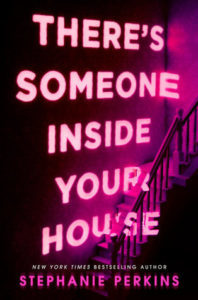 There’s Someone Inside Your House by Stephanie Perkins (September 26)
There’s Someone Inside Your House by Stephanie Perkins (September 26)
One-by-one, the students of Osborne High are dying in a series of gruesome murders, each with increasing and grotesque flair. As the terror grows closer and the hunt intensifies for the killer, the dark secrets among them must finally be confronted.
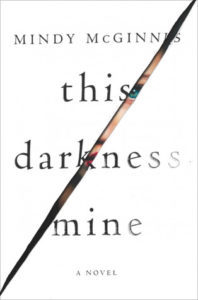 This Darkness Mine by Mindy McGinnis (October 10)
This Darkness Mine by Mindy McGinnis (October 10)
Sasha Stone knows her place—first-chair clarinet, top of her class, and at the side of her oxford-wearing boyfriend. She’s worked her entire life to ensure that her path to Oberlin Conservatory as a star musician is perfectly paved.
But suddenly there’s a fork in the road, in the shape of Isaac Harver. Her body shifts toward him when he walks by, her skin misses his touch even though she’s never known it, and she relishes the smell of him—smoke, beer, and trouble—all the things she’s avoided to get where she is. Even worse, every time he’s near Sasha, her heart stops, literally. Why does he know her so well—too well—and she doesn’t know him at all?
Sasha discovers that her by-the-book life began by ending another’s: the twin sister she absorbed in the womb. But that doesn’t explain the gaps of missing time in her practice schedule or the memories she has of things she certainly never did with Isaac. As Sasha loses her much-cherished control, her life—and heart—become more entangled with Isaac. Armed with the knowledge that her heart might not be hers alone, Sasha must decide what she’s willing to do—and who she’s willing to hurt—to take it back.
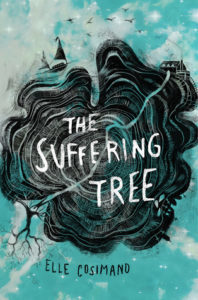 The Suffering Tree by Elle Cosimano
The Suffering Tree by Elle Cosimano
Tori Burns and her family left D.C. for claustrophobic Chaptico, Maryland, after suddenly inheriting a house under mysterious circumstances. That inheritance puts her at odds with the entire town, especially Jesse Slaughter and his family—it’s their generations-old land the Burns have “stolen.” But none of that seems to matter after Tori witnesses a young man claw his way out of a grave under the gnarled oak in her new backyard.
Nathaniel Bishop may not understand what brought him back, but it’s clear to Tori that he hates the Slaughters for what they did to him centuries ago. Wary yet drawn to him by a shared sense of loss, she gives him shelter. But in the wake of his arrival comes a string of troubling events—including the disappearance of Jesse Slaughter’s cousin—that seem to point back to Nathaniel.
As Tori digs for the truth—and slowly begins to fall for Nathaniel—she uncovers something much darker in the tangled branches of the Slaughter family tree. In order to break the centuries-old curse that binds Nathaniel there and discover the true nature of her inheritance, Tori must unravel the Slaughter family’s oldest and most guarded secrets. But the Slaughters want to keep them buried… at any cost.
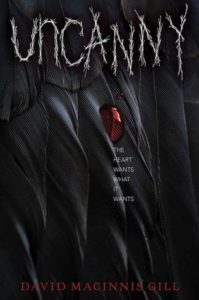 Uncanny by David Macinnis Gill (September 5)
Uncanny by David Macinnis Gill (September 5)
You cannot wake the Shadowless when she sleeps within my bed. Kiss the lips of the Shadowless and the morning finds you dead.
When a bolt of lightning causes a Boston-wide blackout on her sixteenth birthday, Willow Jane doesn’t think anything of it—until she begins stopping time, until she comes face-to-face with her menacing familiar, until her sister disappears. But these aren’t the only strange and horrifying things to come out of the storm. An ancient witch named the Shadowless has awoken and escaped from her crypt, and she’s looking for revenge on Willow Jane’s family.
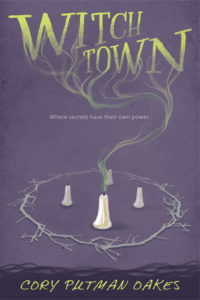 Witchtown by Cory Putman Oakes
Witchtown by Cory Putman Oakes
When sixteen-year-old Macie O’Sullivan and her masterfully manipulative mother Aubra arrive at the gates of Witchtown—the most famous and mysterious witch-only haven in the world—they have one goal in mind: to rob it for all it’s worth.
But that plan derails when Macie and Aubra start to dig deeper into Witchtown’s history and uncover that there is more to the quirky haven than meets the eye.
Exploring the haven by herself, Macie finds that secrets are worth more than money in Witchtown.
Secrets have their own power.
July 13, 2017
This Week at Book Riot
Over on Book Riot this week..
A round-up of YA memoirs worth reading.
The 1939 vocabulary textbooks I had in one of my high school English classes and how that little beast changed my life.
July 11, 2017
Picture Book Biographies of 2017
As a public librarian, I’ve come to appreciate the picture book biography for many reasons. The format is ideally suited to telling a true story in an efficient, beautiful, and interesting way. In a picture book biography, much like a fiction picture book, the illustrations are as important as the text: the two should pair with each other to create a unified work of art.
But perhaps most importantly, the picture book biography is a great way to bring to light the contributions of lesser-known individuals from history both distant and recent, including women, people of color, LGBTQ+ people, and disabled people, and all their intersections. They show kids that people like them have always done remarkable things, pique kids’ interest in something new and fascinating, and spur them to do more investigation on their own afterward.
2017 is looking to be a great year for picture book biographies. This post is a round-up of several notable titles with an emphasis on biographies of marginalized people.
Out Now
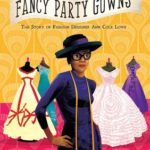 Fancy Party Gowns: The Story of Ann Cole Lowe by Deborah Blumenthal, illustrated by Laura Freeman
Fancy Party Gowns: The Story of Ann Cole Lowe by Deborah Blumenthal, illustrated by Laura Freeman
As soon as Ann Cole Lowe could walk, her momma and grandma taught her to sew. When her mom died, Ann continued sewing dresses. It wasn’t easy, especially when she went to design school and had to learn alone, segregated from the rest of the class. But the work she did set her spirit soaring, as evidenced in the clothes she made. Rarely credited, Ann Cole Lowe became “society’s best kept secret.” This beautiful picture book shines the spotlight on a figure who proved that with hard work and passion, any obstacles can be overcome. (Goodreads)
 Bravo! Poems About Amazing Hispanics by Margarita Engle, illustrated by Rafael Lopez
Bravo! Poems About Amazing Hispanics by Margarita Engle, illustrated by Rafael Lopez
Musician, botanist, baseball player, pilot—the Latinos featured in this collection come from many different countries and from many different backgrounds. Celebrate their accomplishments and their contributions to a collective history and a community that continues to evolve and thrive today! Biographical poems include: Aida de Acosta, Arnold Rojas, Baruj Benacerraf, César Chávez, Fabiola Cabeza de Baca, Félix Varela, George Meléndez, José Martí, Juan de Miralles, Juana Briones, Julia de Burgos, Louis Agassiz Fuertes, Paulina Pedroso, Pura Belpré, Roberto Clemente, Tito Puente, Ynes Mexia, and Tomás Rivera. (Goodreads)
 Keith Haring: The Boy Who Just Kept Drawing by Kay Haring, illustrated by Robert Neubecker
Keith Haring: The Boy Who Just Kept Drawing by Kay Haring, illustrated by Robert Neubecker
Traces the life of artist Keith Haring, from his childhood love of drawing to his meteoric rise to fame, with a focus on his concern for children, humanity, and disregard for the established art world. (WorldCat)
 Maya Lin: Artist-Architect of Light and Lines by Jeanne Walker Harvey, illustrated by Dow Phumiruk
Maya Lin: Artist-Architect of Light and Lines by Jeanne Walker Harvey, illustrated by Dow Phumiruk
As a child, Maya Lin loved to study the spaces around her. She explored the forest in her backyard, observing woodland creatures, and used her house as a model to build tiny towns out of paper and scraps. The daughter of a clay artist and a poet, Maya grew up with art and learned to think with her hands as well as her mind. From her first experiments with light and lines to the height of her success nationwide, this is the story of an inspiring American artist: the visionary artist-architect who designed the Vietnam Veterans Memorial. (Goodreads)
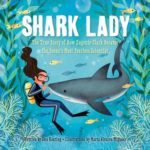 Shark Lady: The True Story of How Eugenie Clark Became the Ocean’s Most Fearless Scientist by Jess Keating, illustrated by Marta Alvarez Miguens
Shark Lady: The True Story of How Eugenie Clark Became the Ocean’s Most Fearless Scientist by Jess Keating, illustrated by Marta Alvarez Miguens
At 9 years old, Eugenie Clark developed an unexpected passion for sharks after a visit to the Battery Park Aquarium in New York City. At the time, sharks were seen as mindless killing machines, but Eugenie knew better and set out to prove it. Despite many obstacles in her path, Eugenie was able to study the creatures she loved so much. From her many discoveries to the shark-related myths she dispelled, Eugenie’s wide scientific contributions led to the well-earned nickname “Shark Lady.” (Goodreads)
 The Youngest Marcher: The Story of Audrey Faye Hendricks, a Young Civil Rights Activist by Cynthia Levinson, illustrated by Vanessa Brantley Newton
The Youngest Marcher: The Story of Audrey Faye Hendricks, a Young Civil Rights Activist by Cynthia Levinson, illustrated by Vanessa Brantley Newton
Meet the youngest known child to be arrested for a civil rights protest in Birmingham, Alabama, 1963, in this moving picture book that proves you’re never too little to make a difference. Nine-year-old Audrey Faye Hendricks intended to go places and do things like anybody else. So when she heard grown-ups talk about wiping out Birmingham’s segregation laws, she spoke up. As she listened to the preacher’s words, smooth as glass, she sat up tall. And when she heard the plan—picket those white stores! March to protest those unfair laws! Fill the jails!—she stepped right up and said, I’ll do it! She was going to j-a-a-il! Audrey Faye Hendricks was confident and bold and brave as can be, and hers is the remarkable and inspiring story of one child’s role in the Civil Rights Movement. (Goodreads)
 Take a Picture of Me, James VanDerZee! by Andrea J. Loney, illustrated by Keith Mallett
Take a Picture of Me, James VanDerZee! by Andrea J. Loney, illustrated by Keith Mallett
James VanDerZee was just a young boy when he saved enough money to buy his first camera. He took photos of his family, classmates, and anyone who would sit still for a portrait. By the fifth grade, James was the school photographer and unofficial town photographer. Eventually he outgrew his small town and moved to the exciting, fast-paced world of New York City. After being told by his boss that no one would want his or her photo taken by a black man, James opened his own portrait studio in Harlem. He took photographs of legendary figures of the Harlem Renaissance and ordinary folks in the neighborhood too. Everyone wanted fancy portraits by James VanDerZee. Winner of Lee & Low’s New Voices Award, Take a Picture of Me, James VanDerZee! tells the story of a groundbreaking artist who chronicled an important era in Harlem and showed the beauty and pride of its people. (Goodreads)
 Trudy’s Big Swim: How Gertrude Ederly Swam the English Channel and Took the World By Storm by Sue Macy, illustrated by Matt Collins
Trudy’s Big Swim: How Gertrude Ederly Swam the English Channel and Took the World By Storm by Sue Macy, illustrated by Matt Collins
On the morning of August 6, 1926, Gertrude Ederle stood in her bathing suit on the beach at Cape Gris-Nez, France, and faced the churning waves of the English Channel. Twenty-one miles across the perilous waterway, the English coastline beckoned. Lyrical text, stunning illustrations and fascinating back matter put the reader right alongside Ederle in her bid to be the first woman to swim the Channel and contextualizes her record-smashing victory as a defining moment in sports history. (Goodreads)
 Chef Roy Choi and the Street Food Remix by Jacqueline Briggs Martin and June Jo Lee, illustrated by Man One
Chef Roy Choi and the Street Food Remix by Jacqueline Briggs Martin and June Jo Lee, illustrated by Man One
Describes the popular street cook’s life, including working in his family’s restaurant as a child, figuring out what he wanted to do with his life, and his success with his food truck and restaurant. (WorldCat)
 Marti’s Song for Freedom by Emma Otheguy, illustrated by Beatriz Vidal
Marti’s Song for Freedom by Emma Otheguy, illustrated by Beatriz Vidal
A bilingual biography of José Martí, who dedicated his life to the promotion of liberty, abolishment of slavery, political independence for Cuba, and intellectual independence from colonialism for all Latinos. Written in verse with excerpts from Mart’s seminal work, Versos sencillos. (Goodreads)
 When You Look Out the Window: How Phyllis Lyon and Del Martin Built a Community by Gayle E. Pitman, illustrated by Christopher Lyles
When You Look Out the Window: How Phyllis Lyon and Del Martin Built a Community by Gayle E. Pitman, illustrated by Christopher Lyles
Tells the story of Phyllis Lyon and Del Martin, one of San Francisco’s most well-known and politically active lesbian couples. Describing the view from Phyllis and Del’s window, this book shows how one couple’s activism transformed their community – and had ripple effects throughout the world. (WorldCat)
 The Girl Who Ran: Bobbi Gibb, the First Woman to Run the Boston Marathon by Frances Poletti and Kristina Yee, illustrated by Susanna Chapman
The Girl Who Ran: Bobbi Gibb, the First Woman to Run the Boston Marathon by Frances Poletti and Kristina Yee, illustrated by Susanna Chapman
In 1966, the world believed it was impossible for a woman to run the Boston Marathon. Bobbi Gibb was determined to prove them wrong. She said she would do it, she wasn’t a liar; she’d show them by running like the wind in the fire. (WorldCat)
 Margaret and the Moon: How Margaret Hamilton Saved the First Lunar Landing by Dean Robbins, illustrated by Lucy Knisley
Margaret and the Moon: How Margaret Hamilton Saved the First Lunar Landing by Dean Robbins, illustrated by Lucy Knisley
Margaret Hamilton loved numbers as a young girl. She knew how many miles it was to the moon (and how many back). She loved studying algebra and geometry and calculus and using math to solve problems in the outside world. Soon math led her to MIT and then to helping NASA put a man on the moon! She handwrote code that would allow the spacecraft’s computer to solve any problems it might encounter. Apollo 8. Apollo 9. Apollo 10. Apollo 11. Without her code, none of those missions could have been completed. Dean Robbins and Lucy Knisley deliver a lovely portrayal of a pioneer in her field who never stopped reaching for the stars. (Goodreads)
 Lighter Than Air: Sophie Blanchard, the First Woman Pilot by Matthew Clark Smith, illustrated by Matt Tavares
Lighter Than Air: Sophie Blanchard, the First Woman Pilot by Matthew Clark Smith, illustrated by Matt Tavares
In eighteenth-century France, “balloonomania” has fiercely gripped the nation . . . but all of the pioneering aeronauts are men. The job of shattering that myth falls to a most unlikely figure: a shy girl from a seaside village, entirely devoted to her dream of flight. Sophie is not the first woman to ascend in a balloon, nor the first woman to accompany an aeronaut on a trip, but she will become the first woman to climb to the clouds and steer her own course. (Goodreads)
 Grace Hopper: Queen of Computer Code by Laurie Wallmark, illustrated by Katy Wu
Grace Hopper: Queen of Computer Code by Laurie Wallmark, illustrated by Katy Wu
Who was Grace Hopper? A software tester, workplace jester, cherished mentor, ace inventor, avid reader, naval leader—AND rule breaker, chance taker, and troublemaker. Grace Hopper coined the term “computer bug” and taught computers to “speak English,” and throughout her life succeeded in doing what no one had ever done before. Delighting in difficult ideas and in defying expectations, the insatiably curious Hopper truly is “Amazing Grace” . . . and a role model for science- and math-minded girls and boys. (Goodreads)
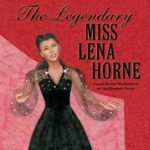 The Legendary Miss Lena Horne by Carole Boston Weatherford, illustrated by Elizabeth Zunon
The Legendary Miss Lena Horne by Carole Boston Weatherford, illustrated by Elizabeth Zunon
Lena Horne was born into the freedom struggle, to a family of teachers and activists. Her mother dreamed of being an actress, so Lena followed in her footsteps as she chased small parts in vaudeville, living out of a suitcase until MGM offered Lena something more—the first ever studio contract for a black actress. But the roles she was considered for were maids and mammies, stereotypes that Lena refused to play. Still, she never gave up. “Stormy Weather” became her theme song, and when she sang “This Little Light of Mine” at a civil rights rally, she found not only her voice, but her calling. (Goodreads)
Forthcoming
 Long-Armed Ludy and the First Women’s Olympics by Jean L.S. Patrick, illustrated by Adam Gustavson | August 8
Long-Armed Ludy and the First Women’s Olympics by Jean L.S. Patrick, illustrated by Adam Gustavson | August 8
Lucile “Ludy” Godbold was six feet tall and skinnier than a Carolina pine and an exceptional athlete. In her final year on the track team at Winthrop College in South Carolina, Ludy tried the shot put and she made that iron ball sail with her long, skinny arms. But when Ludy qualified for the first Women’s Olympics in 1922, Ludy had no money to go. Thanks to the help of her college and classmates, Ludy traveled to Paris and won the gold medal with more than a foot to spare. (publisher marketing)
 Yayoi Kusama: From Here to Infinity! by Sarah Suzuki, illustrated by Ellen Weinstein | August 22
Yayoi Kusama: From Here to Infinity! by Sarah Suzuki, illustrated by Ellen Weinstein | August 22
Growing up in the mountains of Japan, Yayoi Kusama (b. 1929) dreamed of becoming an artist. One day, she had a vision in which the world and everything in it—the plants, the people, the sky—were covered in polka dots. She began to cover her paintings, drawings, sculptures, and even her body with dots. As she grew up, she traveled all around the world, from Tokyo to Seattle, New York to Venice, and brought her dots with her. Different people saw these dots in different ways—some thought they were tiny, like cells, and others imagined them enormous, like planets. Every year, Kusama sees more of the world, covering it with dots and offering people a way to experience it the way she does. Written by Sarah Suzuki, a curator at The Museum of Modern Art, and featuring reproductions of Kusama’s instantly recognizable artworks, this colorful book tells the story of an artist whose work will not be complete until her dots cover the world, from here to infinity. (Goodreads)
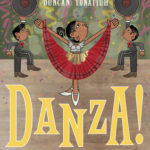 Danza! Amalia Hernandez and El Ballet Folklorico de Mexico by Duncan Tonatiuh | August 22
Danza! Amalia Hernandez and El Ballet Folklorico de Mexico by Duncan Tonatiuh | August 22
Award-winning author and illustrator Duncan Tonatiuh tells the story of Amalia Hernández, dancer and founder of El Ballet Folklórico de México. Danza! is a celebration of Hernández’s life and of the rich history of dance in Mexico. As a child, Amalia always thought she would grow up to be a teacher, until she saw a performance of dancers in her town square. She was fascinated by the way the dancers twirled and swayed, and she knew that someday she would be a dancer, too. She began to study many different types of dance, including ballet and modern, under some of the best teachers in the world. Hernández traveled throughout Mexico studying and learning regional dances. Soon she founded her own dance company, El Ballet Folklórico de México, where she integrated her knowledge of ballet and modern dance with folkloric dances. The group began to perform all over the country and soon all over the world, becoming an international sensation that still tours today. (Goodreads)
 The World is Not a Rectangle: A Portrait of Architect Zaha Hadid by Jeanette Winter | August 22
The World is Not a Rectangle: A Portrait of Architect Zaha Hadid by Jeanette Winter | August 22
Zaha Hadid grew up in Baghdad, Iraq, and dreamed of designing her own cities. After studying architecture in London, she opened her own studio and started designing buildings. But as a Muslim woman, Hadid faced many obstacles. Determined to succeed, she worked hard for many years, and achieved her goals—and now you can see the buildings Hadid has designed all over the world. (Goodreads)
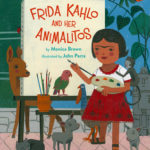 Frida Kahlo and Her Animalitos by Monica Brown, illustrated by John Parra | September 5
Frida Kahlo and Her Animalitos by Monica Brown, illustrated by John Parra | September 5
The fascinating Mexican artist Frida Kahlo is remembered for her dramatic self-portrait paintings featuring bold and vibrant colors. Her artwork brought attention to Mexican and indigenous culture with images renowned in celebrating the female form. Brown’s story recounts Frida’s beloved pets—two monkeys, a parrot, three dogs, two turkeys, an eagle, a black cat, and a fawn—and playfully considers how Frida embodied the many wonderful characteristics of each animal. (Goodreads)
 Dumpling Dreams: How Joyce Chen Brought the Dumpling From Beijing to Cambridge by Carrie Clickard, illustrated by Katy Wu | September 5
Dumpling Dreams: How Joyce Chen Brought the Dumpling From Beijing to Cambridge by Carrie Clickard, illustrated by Katy Wu | September 5
Carrie Clickard’s delectable rhymes tell the story of how Joyce Chen, a girl born in Communist China, immigrated to the United States and popularized Chinese cooking. Illustrator Katy Wu brings this inspiring story beautifully and deliciously to life. (Goodreads)
 Muddy: The Story of Blues Legend Muddy Waters by Michael Mahin, illustrated by Evan Turk | September 5
Muddy: The Story of Blues Legend Muddy Waters by Michael Mahin, illustrated by Evan Turk | September 5
Muddy Waters was never good at doing what he was told. When Grandma Della said the blues wouldn’t put food on the table, Muddy didn’t listen. And when record producers told him no one wanted to listen to a country boy playing country blues, Muddy ignored them as well. This tenacious streak carried Muddy from the hardscrabble fields of Mississippi to the smoky juke joints of Chicago and finally to a recording studio where a landmark record was made. Soon the world fell in love with the tough spirit of Muddy Waters. In blues-infused prose and soulful illustrations, Michael Mahin and award-winning artist Evan Turk tell Muddy’s fascinating and inspiring story of struggle, determination, and hope. (Goodreads)
 Schomburg: The Man Who Built a Library by Carole Boston Weatherford, illustrated by Eric Velasquez | September 12
Schomburg: The Man Who Built a Library by Carole Boston Weatherford, illustrated by Eric Velasquez | September 12
Amid the scholars, poets, authors, and artists of the Harlem Renaissance stood an Afro-Puerto Rican named Arturo Schomburg. This law clerk’s life’s passion was to collect books, letters, music, and art from Africa and the African diaspora and bring to light the achievements of people of African descent through the ages. When Schomburg’s collection became so big it began to overflow his house (and his wife threatened to mutiny), he turned to the New York Public Library, where he created and curated a collection that was the cornerstone of a new Negro Division. A century later, his groundbreaking collection, known as the Schomburg Center for Research in Black Culture, has become a beacon to scholars all over the world. (Goodreads)
 The Doctor With an Eye for Eyes: The Story of Dr. Patricia Bath by Julia Finley Mosca, illustrated by Daniel Rieley | September 26
The Doctor With an Eye for Eyes: The Story of Dr. Patricia Bath by Julia Finley Mosca, illustrated by Daniel Rieley | September 26
As a girl coming of age during the Civil Rights Movement, Patricia Bath made it her mission to become a doctor. When obstacles like racism, poverty, and sexism threatened this goal, she persevered ― brightening the world with a game-changing treatment for blindness! (publisher marketing)
Mama Africa!: How Miriam Makeba Spread Hope With Her Song by Kathryn Erskine, illustrated by Charly Palmer | October 10, no cover yet
Miriam Makeba, a Grammy Award–winning South African singer, rose to fame in the hearts of her people at the pinnacle of apartheid―a brutal system of segregation similar to American Jim Crow laws. Mama Africa, as they called her, raised her voice to help combat these injustices at jazz clubs in Johannesburg; in exile, at a rally beside Dr. Martin Luther King, Jr.; and before the United Nations. (Goodreads)
July 10, 2017
IT Parade Read Along: Week One
Daniel Kraus over at Booklist is running a 10-week read along of Stephen King’s It to lead up to the release of the new movie in September. Having read a lot of King when I was younger — including It or part of it — it seemed like the right opportunity to pick up the book and play along. I remember none of it, aside from Pennywise being the name of the clown.
What I do remember about my reading experience with King is that it all happened within a summer and a year or so following it, when I literally spent hours every week visiting different libraries. It might have even been the summer where one of the libraries was remodeling, and check out times were extended to eight weeks to make it easier for them to remodel. I blew through a number of King titles and remember really loving Rose Madder and The Girl Who Loved Tom Gordon. Neither of them are particularly memorable to be now, nor are they among the books that end up on the best-of King lists. Most of his bigger stuff I didn’t pick up because I’ve always been one of those kinds of readers. It’s not disliking popularity so much as preferring the quieter stuff.
I can’t make the promise I’ll update with my thoughts after each reading assignment, but I’m going to try to do it Monday afternoons or Tuesdays. They’ll be pretty short and sweet and definitely about reader reaction more than anything else. If you’re reading along or you’ve read It in the past, you’re welcome to hop into the comments and drop your thoughts, too.
Week One: Chapters 1 through 3
So far, we have a young boy who died a few decades in the past. He fell down a sewer drain while chasing a paper boat and met his demise with a clown.
There’s also the gay man who was beaten by some locals as he left the gay bar with his partner, and those local men who did the murdering all claim to have seen the clown along the banks of the waterway in town. Of course, police and prosecutors don’t believe this, and it ends up not becoming part of the testimony for the crime.
Then we fast forward to a comfortably middle class man who has mysteriously died.
When we hit chapter three, we meet far more characters. There’s been a number of phone calls, and the characters are all leaving their lives and heading back to Derry, Maine. Something Has Happened and they all need to flee. It’s a lot of middle age white male crisis going on (and yes, I know there’s also a girl involved, but I’m not quite there yet in my reading, as I’ve got a few more pages in this chapter to go). Thinking about Something Happening and Men Returning Home to face a childhood fear is not an unfamiliar trope, though the pacing, the character development, and tension here work really well.
The most compelling character at this point for me is Ben Hanscom. He flies and travels, but he loves to stop and enjoy food and drinks at a tiny dive in rural Nebraska. This part of chapter three was rendered in such perfect midwesternness, and everything about the setting and the local characters there — not Hanscom himself — made me want more. There might not be much more there, though, if the ending is any indication. And, perhaps, the characters there, as small a role as they play and will play, are okay with that, too.
I can say Eddie Kaspbark might be the most terrible character. He super hates fat women. It’s clearly coming from somewhere, though: his mother seems to have been at the center of many of his repressed childhood memories that bubble up, and his mother was fat. His wife is, too, and has, as he likes to elaborate on, ballooned into something huge. Eddie himself was a weakling child, one who couldn’t participate in PE, one who has a medicine cabinet full of prescription and over-the-counter pills and vitamins. There’s something here, too, about fear of aging, of returning to a place of comfort, to also have a lot of paranoia about what’s outside of ones self and experiences.
Since it has been so long since I’ve read King, I forgot how compelling and fast moving his prose and storytelling are. There’s a lot of repetition in It in terms of images and sounds, so it flows really quickly and seamlessly from one scene to another.
There’s definitely been some trauma in this first part of the read, but nothing that will compare to what’s coming. And I’m ready to get there because the scarier, the better.
Also, a moment to appreciate how Stephen King literally predicted DELIA*s (which used to be a mall retailer and was founded in 1993…six years after It was published).
July 9, 2017
These Book Covers Are Bananas
Because sometimes, you see a book cover with a banana on it and become a 12-year-old with the giggle fits. Here’s a roundup of a bunch of banana book covers, with book descriptions beside them. I’m not going to lie: I’m surprised there aren’t more covers for romances with bananas on them. Too obvious?
Descriptions from Goodreads. I’m kind of surprised just how many microhistories about the fruit there are.
Banana Cultures by John Soluri
Bananas, the most frequently consumed fresh fruit in the United States, have been linked to Miss Chiquita and Carmen Miranda, “banana republics,” and Banana Republic clothing stores—everything from exotic kitsch, to Third World dictatorships, to middle-class fashion. But how did the rise in banana consumption in the United States affect the banana-growing regions of Central America? In this lively, interdisciplinary study, John Soluri integrates agroecology, anthropology, political economy, and history to trace the symbiotic growth of the export banana industry in Honduras and the consumer mass market in the United States.
Beginning in the 1870s when bananas first appeared in the U.S. marketplace, Soluri examines the tensions between the small-scale growers, who dominated the trade in the early years, and the shippers. He then shows how rising demand led to changes in production that resulted in the formation of major agribusinesses, spawned international migrations, and transformed great swaths of the Honduran environment into monocultures susceptible to plant disease epidemics that in turn changed Central American livelihoods. Soluri also looks at labor practices and workers’ lives, changing gender roles on the banana plantations, the effects of pesticides on the Honduran environment and people, and the mass marketing of bananas to consumers in the United States. His multifaceted account of a century of banana production and consumption adds an important chapter to the history of Honduras, as well as to the larger history of globalization and its effects on rural peoples, local economies, and biodiversity.
Banana by Dan Koeppel
To most people, a banana is a banana: a simple yellow fruit. Americans eat more bananas than apples and oranges combined. In others parts of the world, bananas are what keep millions of people alive. But for all its ubiquity, the banana is surprisingly mysterious; nobody knows how bananas evolved or exactly where they originated. Rich cultural lore surrounds the fruit: In ancient translations of the Bible, the ‘apple’ consumed by Eve is actually a banana (it makes sense, doesn’t it?). Entire Central American nations have been said to rise and fall over the banana.
But the biggest mystery about the banana today is whether it will survive. A seedless fruit with a unique reproductive system, every banana is a genetic duplicate of the next, and therefore susceptible to the same blights. Today’s yellow banana, the Cavendish, is increasingly threatened by such a blight — and there’s no cure in sight.
Banana combines a pop-science journey around the globe, a fascinating tale of an iconic American business enterprise, and a look into the alternately tragic and hilarious banana subculture (one does exist) — ultimately taking us to the high-tech labs where new bananas are literally being built in test tubes, in a race to save the world’s most beloved fruit.
Bananas: An American History by Virginia Scott Jenkins
Before 1880 most Americans had never seen a banana. By 1910 bananas were so common that streets were littered with their peels. Today Americans eat on average nearly seventy-five per year. More than a staple of the American diet, bananas have gained a secure place in the nation’s culture and folklore. They have been recommended as the secret to longevity, the perfect food for infants, and the cure for warts, headaches, and stage fright. Essential to the cereal bowl and the pratfall, they remain a mainstay of jokes, songs, and wordplay even after a century of rapid change.
Covering every aspect of the banana in American culture, from its beginnings as luxury food to its reputation in the 1910s as the “poor man’s” fruit to its role today as a healthy, easy-to-carry snack, Bananas provides an insightful look at a fruit with appeal.
Blind Item by Kevin Dickson and Jack Ketsoyan
No one knows her name, but now everyone wants to.
As an assistant publicist in Hollywood, Nicola spends her days (and nights) sweeping up the scandals of singers, movie stars, and TV actors. Fresh from Ohio, she’s rapidly discovering the real Hollywood is rotten under its glittering skin. Everyone is a hustler with a hard bottom line and a soap opera sob story.
When she breaks her own rules and starts dating a movie star, the Los Angeles scene starts to spill into her own life. As the paparazzi begin the hunt for sexy star Seamus O’Riordan’s new mystery girl, Nicola’s best friend Billy has her back while he prowls parties for the latest scoop to sell to the tabloids. Her roommate Kara keeps tabs on things too—in between befriending a former child star and transforming herself from stylist to reality TV sensation.
As the scandals pile up behind them, their pasts will be exposed… And every secret can be sold.
Written by two Hollywood insiders, the jaw-dropping scandals are real, but the names are not. And they’ll never tell.
Eliot’s Banana by Heather Swain
Things should be peachy.
Junie isn’t entirely sure what her problem is. She’s just moved into a Brooklyn apartment with her cool longtime boyfriend Leon, a drummer who adores her. She flits through a string of temp jobs in funky thrift store clothes. But beneath her veneer of quirky humor there’s a nagging feeling of dissatisfaction about her life.
She’s about to go bananas.
When Junie meets Eliot, who is twice her age, and his cat, Alfie, at the vet’s office, she’s convinced she’s found the zest missing in her life. A burnt-out sci-fi writer in search of a muse, Eliot is apples to Leon’s oranges. It’s not long before Junie’s standing in his kitchen being offered a banana…and then some.
Losing herself in the mayhem of a fling, Junie slowly realizes that kinky diversions are a poor distraction from what’s really eating her. Only when she stops obsessing about Eliot and starts peeling away the layers of her family’s past will she see that what she really wants has been waiting for her all along…and that her future’s ripe with possibilities.
Love in Infant Monkeys by Lydia Millet
Lions, rabbits, monkeys, pheasants—all have shared the spotlight and tabloid headlines with famous men and women. Sharon Stone’s husband’s run-in with a Komodo dragon, Thomas Edison’s filming of an elephant’s electrocution and David Hasselhoff’s dogwalker all find a home in Love in Infant Monkeys. At the rare intersections of wilderness and celebrity, Lydia Millet hilariously tweaks these unholy communions to run a stake through the heart of our fascination with pop icons and the culture of human self-worship.
Never Out of Season by Rob Dunn
The bananas we eat today aren’t your parents’ bananas: We eat a recognizable, consistent breakfast fruit that was standardized in the 1960s from dozens into one basic banana. But because of that, the banana we love is dangerously susceptible to a pathogen that might wipe them out.
That’s the story of our food today: Modern science has brought us produce in perpetual abundance-once-rare fruits are seemingly never out of season, and we breed and clone the hardiest, best-tasting varieties of the crops we rely on most. As a result, a smaller proportion of people on earth go hungry today than at any other moment in the last thousand years, and the streamlining of our food supply guarantees that the food we buy, from bananas to coffee to wheat, tastes the same every single time.
Our corporate food system has nearly perfected the process of turning sunlight, water and nutrients into food. But our crops themselves remain susceptible to the nature’s fury. And nature always wins.
Authoritative, urgent, and filled with fascinating heroes and villains from around the world, Never Out of Season is the story of the crops we depend on most and the scientists racing to preserve the diversity of life, in order to save our food supply, and us.
Noah Can’t Even by Simon James Green
Poor Noah Grimes! His father disappeared years ago, his mother’s Beyonce tribute act is an unacceptable embarrassment, and his beloved gran is no longer herself. He only has one friend, Harry, and school is…Well, it’s pure HELL. Why can’t Noah be normal, like everyone else at school? Maybe if he struck up a romantic relationship with someone – maybe Sophie, who is perfect and lovely – he’d be seen in a different light? But Noah’s plans are derailed when Harry kisses him at a party. That’s when things go from bad to utter chaos.
Notes on a Banana by David Leite
Born into a devoutly Catholic, food-crazed family of Azorean immigrants in 1960s Fall River, Massachusetts, David had a childhood that was the stuff of sitcoms. But what no one knew was that this smart-ass, determined dreamer with a vivid imagination also struggled with the frightening mood swings of bipolar disorder. To cope, “Banana,” as his mother endearingly called him, found relief and comfort in food, watching reruns of Julia Child, and, later as an adult, cooking for others. It was only in his mid-thirties, after years of desperate searching, did he finally uncover the truth about himself, receive proper medical treatment, and begin healing.
Throughout the narrative, David takes the reader along on the exhilarating highs and shattering lows of his life, with his trademark wit and humor: We watch as he slams the door on his Portuguese heritage in favor of blond-haired, blue-eyed WASPdom; pursues stardom with a near-pathological relentlessness; realizes he’s gay and attempts to “turn straight” through Aesthetic Realism, a cult in downtown Manhattan; battles against dark and bitter moods; delights in his twenty-plus year relationship with Alan (known to millions of David’s readers as “The One”); and shares the people, dishes, and events that shaped him.
The Art of Failing by Anthony McGowan
HAUNTED! By endless tiny humiliations.
STRUGGLING! To resurrect the corpse of his literary career.
ENSNARED! In a loving yet perplexing marriage.
Anthony McGowan is a man at odds with the universe. Stumbling from one improbable fiasco to the next, patrolling the mean streets of West Hampstead like some unholy cross between Columbo, J. Alfred Prufrock and a common tramp, he ponders the very stuff of life itself. For McGowan that’s holed socks, unsatisfactory packed lunches, athlete’s foot powder, Kierkegaard, the eccentricities of the British Library, liver salts, Morrissey and disapproving ladies on trains… Relentlessly honest, exquisitely funny, The Art of Failing is a paean to the glory and desperation of everyday existence.
The Fish That Ate The Whale by Rich Cohen
When Samuel Zemurray arrived in America in 1891, he was tall, gangly, and penniless. When he died in the grandest house in New Orleans sixty-nine years later, he was among the richest, most powerful men in the world. In between, he worked as a fruit peddler, a banana hauler, a dockside hustler, and a plantation owner. He battled and conquered the United Fruit Company, becoming a symbol of the best and worst of the United States: proof that America is the land of opportunity, but also a classic example of the corporate pirate who treats foreign nations as the backdrop for his adventures. In Latin America, when people shouted “Yankee, go home!” it was men like Zemurray they had in mind.
The Oddities Of Life by Martin Bryers
This isn’t a real book but a sample book cover from Canva I happened upon and couldn’t not include.
Know of any other covers that are bananas? Leave ’em in the comments!





